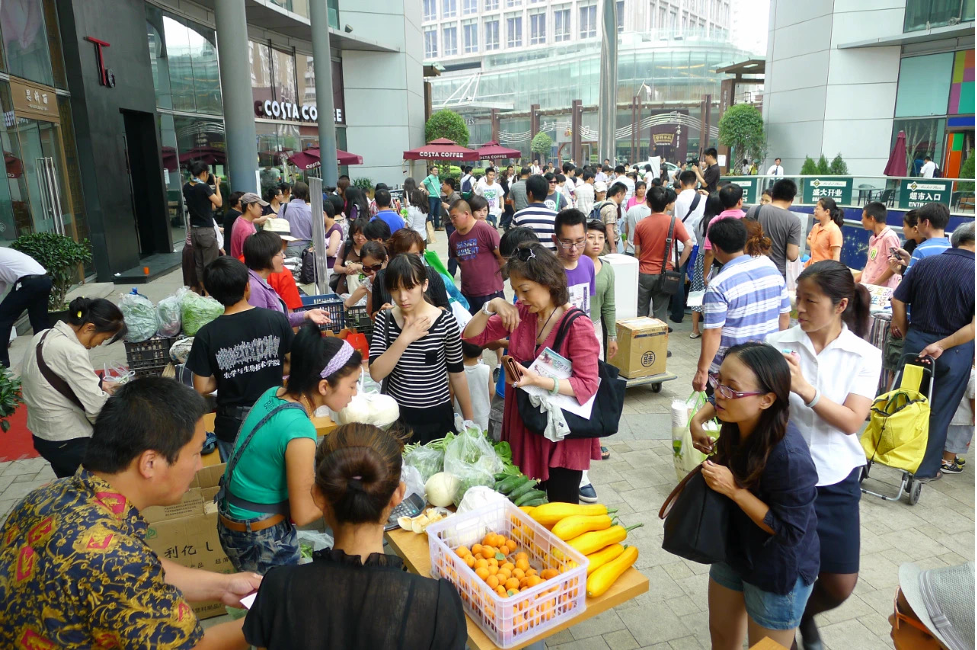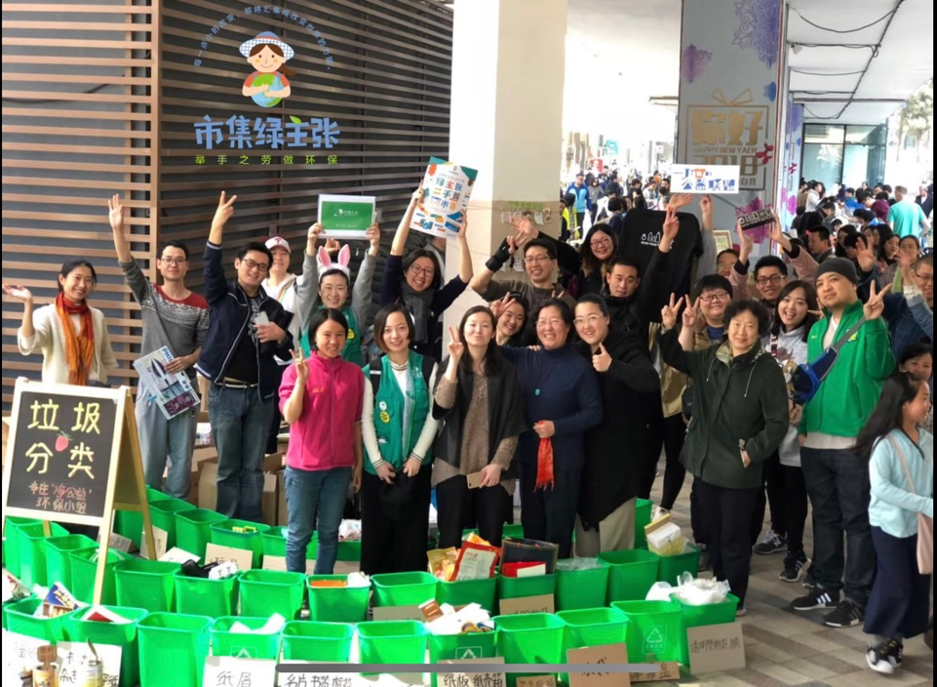Can Alternative Food Networks Fix Consumers’ Trust Issues? Observations from China
https://doi.org/10.25542/w4fv-hj85
Please Note: The voice used in this audio recording does not belong to the author. All content and opinions expressed in this recording are those of the author.
What’s Alternative about AFN?
Alternative food networks (AFN) emerged in North America and Europe in the 1970s as part of the broader social movement inspired by social democracy. AFN brought together a wide range of actors, such as farmers, consumers, and professional activist groups, to experiment with production, distribution, and consumption practices to fight the negative effects of industrialised food production. These include the health hazards of agrochemicals and ultra-processed food, the marginalisation of the local economy and small producers, and the exploitation of natural resources, among others. 40 years on, these practices and ideas have travelled to other parts of the world as developing countries hop on the train of agricultural modernisation and globalisation.
As industrialised food systems have become too complex for consumers to know what they are eating, AFN is often commended as a tool that empowers the consumer because of its potential to overcome information asymmetry. Advocates such as small farmers and active consumers argue that by forming transparent, short, and local supply chains, consumers can reconnect with producers, allowing them to learn how their food is produced first hand. This consumer-producer connection not only promotes a shared knowledge of food production, it also forges solidarity among food communities. In this way, AFN addresses consumers’ trust in food safety, while giving small local producers more voice in defining good and ethical production.
AFN in China as consumer-drive initiatives
My research examines the extent to which AFN in China resolve trust issues in food consumption. I will discuss how AFN try to forge consumers’ trust by building transparency and the outcomes of these efforts. Unless noted as citations, the information in the article comes from my research observations.
The values and principles of AFN have been adopted in major metropolises in China like Beijing and Guangzhou, as well as in smaller cities such as Yunnan, Guangxi, Shanxi, and Sichuan, etc. in the last two decades. By AFN in China, I refer to food exchange networks that are driven by the consumers’ pursuit of healthy food, which operate outside of the state’s food classification system. AFN in China take diverse shapes and forms and blossom in various places. From my fieldwork and research, I have discovered that Chinese consumers tap into personal networks, word-of-mouth exchanges among friends and relatives in the countryside, and traders in traditional wet markets who have alternative sourcing to look for safe sources of food, especially for fresh produce. Some forms of AFN I identified during my fieldwork include community-supported farms, farmers’ markets, buying clubs, and online sales.
Unlike its counterparts in Europe and the US, which are driven by strong political values, AFN in China are mainly driven by middle-class consumers’ concerns over food safety and are largely de-politicised, avoiding confrontation with the state regulations. Governing food safety is a complex issue in China. Food production and distribution systems have undergone a great transformation since the 1970s. The use of agrochemicals has been normalised and a national food market has been developed with the state’s facilitation. A myriad of countless small farmers and market intermediaries operating within the industrialised food system, although greatly enhancing the efficiency of food supply, also create substantial difficulty in the effective regulation of producers and distributors. Any health hazard in the micro-production process can affect consumers on a large scale through the expanded food distribution system.
Any weakness in the regulation system inevitably affects consumers. An outburst of food safety scandals in the 2000s was followed by a growing concern over food safety by the public. Afterwards, the state tightened regulations by introducing strict food safety classification regimes, but the results remain mixed, and public scepticism towards regulations persists.
Take organic foods, for example. The state requires all producers to obtain a national organic certification if they wish to openly claim to be organic in their advertising. However, mislabelling was frequently reported throughout the 2000s and 2010s (interviews with Chinese scholars also confirm this). In seeking truly organic products, middle-class consumers in major cities such as Beijing, Shanghai, Chengdu, and Guangzhou then began experimenting with AFN. According to my interviews with pioneer consumers in AFN in different cities, they began with a simple idea—if they had direct contact with producers, they could then visit production sites at any time to inspect whether the process truly adheres to organic standards. Starting thus from scratch, they relied on word-of-mouth to find farmers in suburbs who avoid using agrochemicals and pesticides in food production and visited these farmers in person to verify the farming process.

Initially, the producers in this market were few. Some were urban residents who primarily rented farmland in the countryside, and their products were limited in variety and quantity. Direct sales were confined to small, tight-knit networks that relied on consumer volunteers to manage logistics. Yet this quickly grew. As the founders of some of these networks recall, the increasing number of consumers and producers that opted for this type of AFN in the 2010s called for more routinised transactions. As a result, for-profit intermediary organisations, such as farmers’ markets, buying clubs, and online stores, replaced volunteers in selecting producers, inspecting their production processes, and marketing their products.
Practicing transparency to forge trust, but with mixed results
To show that they remain committed to a transparent supply chain, these intermediary organisations strove to maintain direct contact between consumers and producers, organising direct sales and inviting consumers to join in inspections on farms. When consumers could not attend inspections in person, intermediary organisations communicated how they inspected the production processes by showing the farms virtually, sharing the producers’ records of farming activities, and updating sample tests on products. They also worked towards minimising additional intermediaries in their interactions with consumers and producers.
These transparency practices are mostly welcomed by consumers. Some avid consumers told me they learnt a lot about production and formed friendships with producers. More importantly, the AFN had become a nexus of actors in several related fields, such as urban gardening, seed preservation, and waste recycling, helping them to channel resources and knowledge and fostering cooperation.
However, my observations also suggest that such transparency practices have been compromised by the knowledge gap between consumers and producers. While consumers know that organic farming precludes the use of chemical fertilisers and pesticides, most of them struggle to determine if what they see on the farm aligns with these standards because they lack familiarity with the subtleties of farming practices. For instance, during my fieldwork, I met individuals who had difficulties determining if a tomato had been treated with growth hormones solely from its appearance. Identifying these interventions and whether they violate organic principles requires experience and deeper knowledge that most consumers lack. In addition, consumers have limited time to invest in learning about production. I found that few consumers who took part in AFN had thoroughly explored the available information regarding how their food is produced. Some producers even complain that consumers lack interest in understanding farming processes.

Because consumers are not necessarily committed to understanding the complexity of food production, transparency advocated by AFN can be easily reduced to performance. Consumers look for what only appears to be transparent communication and organic production and their trust in producers is mostly based on aesthetic preferences or popular beliefs of what organic farming should look like. Since consumers’ judgment relies heavily on the aesthetic presentation of the farming process, the rituals, props, and discourses displayed by producers and sales staff have a direct influence on consumers’ perception of production and food quality. A curated demonstration of the farm, the employment of terminologies of organic farming, and middle-class food aesthetics can easily draw consumers’ attention. However, these selective elements serve only to indicate organic farming rather than verify it.
Moreover, a considerable portion of consumers do not participate in transparency practices themselves. Instead, they are satisfied reading about transparency in advertising, knowing that someone else is doing the job for them. This pushes the performative nature of transparency to an extreme. For example, in my interview with a long-term customer at the Farmers’ Market in Beijing, my informant admitted he had never taken part in any farm visit, despite shopping here for almost a decade. He said:
To be honest, I think a consumer can never know as much about the products as the producers themselves do. But I still think the Farmers’ Market is trustworthy from my interactions with the staff here since I heard about their criteria and saw how they performed regular checks [through advertising].
The downside of this performative transparency is that consumers outsource once again their participation in production to intermediaries. Their trust in producers is fragile since they cannot distinguish what information is essential to make an informed judgment. Most importantly, the aesthetic-driven performance obscures social issues that cause food safety scandals. Without questioning the relationships between farming practices and the sustainability of the ecosystem and between production mode and the livelihood of producers, consumers cannot understand what factors prevent or encourage producers to promote safer and more organic production.

The current literature portrays transparent supply chains advocated by AFN in a positive light because they help overcome the information asymmetry, empowering both consumers and small producers. In China, this is also the hope of consumers who wish to avoid the opacity of the formal certification regime. However, the practices of transparency in AFN do not entirely deliver on its promise. As many AFN are still focussed on serving the consumers, the solidarity between consumers and producers is downplayed. As long as AFN cater only to consumers’ preferences for aesthetics and convenience, and outsource consumers’ engagement with production to intermediaries, AFN are no different from third-party certifications. It is possible that AFN, under the pressure of market competition, may grow more similar to the conventional market in endorsing production that cater to consumers’ quick-changing preferences and needs for convenience.
The case of AFN in China shows that addressing consumers’ trust within a consumerism framework may not always benefit consumers, even if consumers care about how their food is produced. Scholars have argued that focusing only on food quality weakens AFN because quality is a concept susceptible to marketing manipulation. If we as consumers seek only “quality” and convenience and hope to buy ourselves out of the systematic issues that give rise to food safety scandals, then we are always in danger of outsourcing our autonomy to the market.
Without examining the deeper issues that give rise to food safety, such as productivism that underpins agriculture modernisation and market inequalities, alternative food networks risk being reduced to just an alternative form of food marketing. As for consumers, it is worth contemplating whether we can get healthy food without caring about the health of the ecosystem and of the people that produce the food. A transparent approach to food safety issues starts with seeing the conditions of other people and their lives in food systems as well as being more intentional about what relationships we want to build through consumption.
Interested to find out more? Read the full article (open access) here.
The views expressed in this forum are those of the individual authors and do not represent the views of the Asia Research Institute, National University of Singapore, or the institutions to which the authors are attached.
Dr Li Shumeng is a Postdoctoral Fellow with the Food, Politics and Society Cluster at the Asia Research Institute. Dr Li obtained her PhD in Sociology from Cornell University and her research is focused on value chains in Chinese agriculture, food consumption, class identities, and knowledge production in agriculture.









